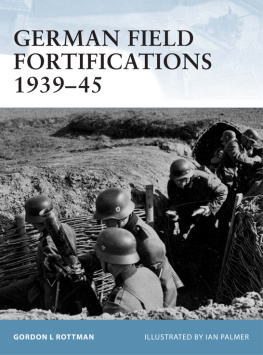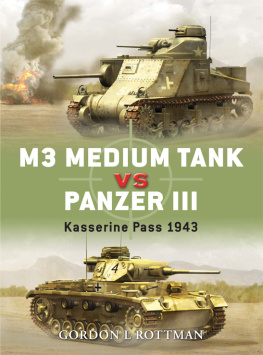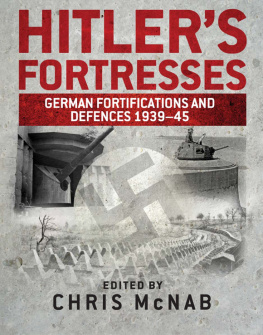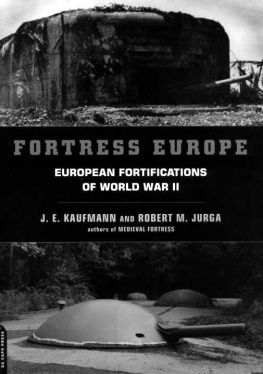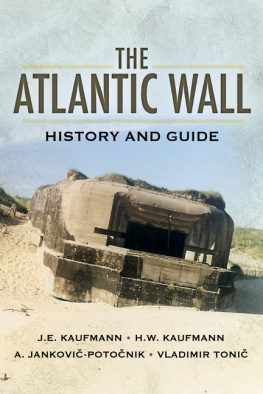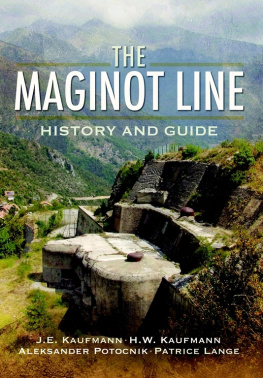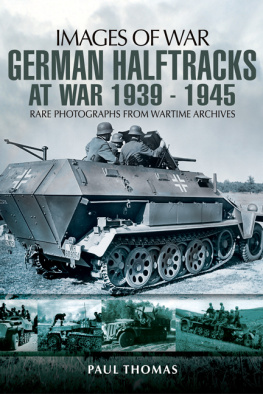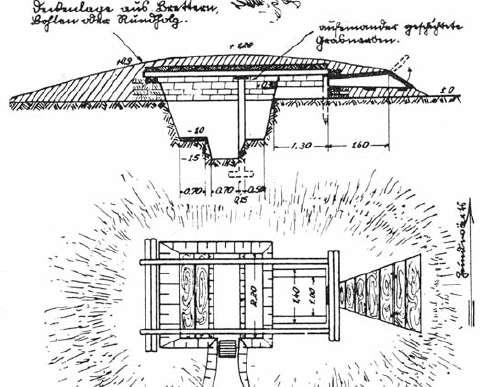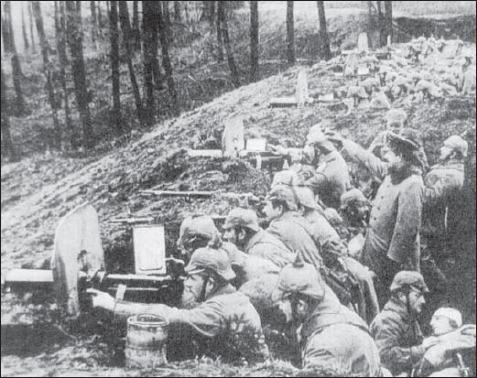FORTRESS 23
GERMAN FIELD FORTIFICATIONS 193945
| GORDON L ROTTMAN | ILLUSTRATED BY IAN PALMER |
| Series editor Marcus Cowper and Nikolai Bogdanovic |
Contents
Introduction
While the German Army (deutschen Heer) is perhaps best known for elaborate, massive concrete and steel fortifications, such as the Westwall (or Siegfried Line) and Atlantikwall, the fortifications that a German soldier was most familiar with were the ones he dug himself. Whether built on the sprawling steppes of Russia, in the deserts of North Africa, in the mountains of Italy, in European hills and forests, or among the rubble of countless battered cities, these were the fortifications that truly defined the boundaries of the Third Reich.
The focus of this study is the field fortifications constructed by combat troops defending the frontline. Large, permanent fortifications are beyond the scope of this book, and are dealt with in accompanying Fortress titles (such as Fortress 15: Germanys West Wall). The core focus will be temporary and semi-permanent crew-served weapon positions and individual and small-unit fighting positions, built with local materials and occasionally construction matriel. Little engineer support was provided: pioneer troops may have provided advice, but the infantry mostly built these positions and obstacles. However, pioneer (Pionier) and construction (Baupionier) units and Organisation Todt civilian labourers did sometimes prepare defences behind the front for units to fall back to.
While wartime intelligence studies and reports provide detailed information on German field defences, only limited post-war study has been undertaken. This is largely due to their temporary nature, and the fact that little survives of them today. The Wehrmacht (consisting of the Heer, Luftwaffe and Kriegsmarine) used the same basic doctrine and manuals for positioning and construction purposes as did the Waffen-SS. With the exception of local improvisation, a factor common to all armies in the field, all branches of the German armed forces employed these field fortifications and obstacles.
What the Germans did not want to experience again a machine-gun platoon on the Western Front, 1914. Watercooled 7.92mm MG.08 heavy machine guns were reissued to fortress machine-gun battalions late in World War II.
German tactical defence doctrine
Elastic defence
The experiences on the Western Front during World War I had a strong influence (both negative and positive) on post-war defence doctrine. The positive aspect of World War I to the Germans, from the doctrinal standpoint, was the development of what is informally known as the elastic defence (elastische Kampfverfahren, literally elastic battle procedures). By 1916 it had been realised that solid multi-layered trench systems and an unyielding defence, aimed at holding on to every metre of ground, were impractical. Massive six-day artillery barrages would shatter defences and the defenders. General of Infantry Erich Ludendorff endorsed a more in-depth defence. While still relying on continuous interconnected trench lines, the defences were subdivided into three zones: (1) combat outpost zone with minimal lookouts to warn of attacks and keep patrols from penetrating deeper; (2) 1,5003,000m-deep main battle zone with complex trench systems concentrated on key terrain (rather than rigid lines covering all areas) intended to halt the attack; and (3) rear zone with artillery and reserves. While the battle zone still relied on trench lines, to establish the new defences the Germans actually withdrew (previously unheard of) in some sectors to more easily defended terrain, placed many of the trenches on reverse slopes to mask them from enemy observation and fire, and established strongpoints on key terrain. The establishment of the combat zone, supported by long-range artillery, disrupted Allied attacks. After fighting its way through the outpost zone the attack would often exhaust itself in the battle zone. Rather than attempting to halt the attack outright, penetration of the battle zone was accepted. The attack would become bogged down among the defences, battered by artillery fire and counter-attacks. This was first implemented in April 1917, and by wars end in November 1918 the defences were completely rearranged under this concept. It had proved itself, and was adopted by the post-war Reichsheer in 1921.
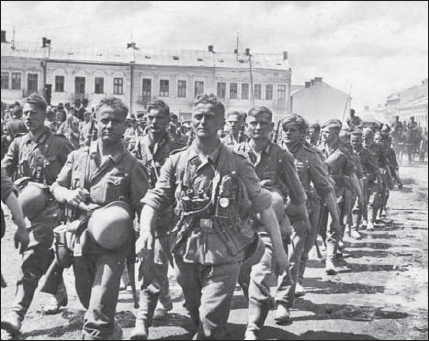
In spite of the much-vaunted blitzkrieg concept of mobile warfare, in 1940 only 10 per cent of the German Armys 138 divisions were motorised. The infantry divisions 27 rifle companies walked, and most artillery and supply transport were horse drawn. The lack of mechanisation had a major impact on how the Germans conducted defensive operations.
Mobile warfare
There were negative influences too of the experiences on the Western Front. The horror, misery and prolonged stalemate of trench or positional warfare (Stellungskrieg) encouraged many, like Hans von Seeckt, to find another way to wage war. Some form of mobile offensive was preferred and defence was regarded as necessary only for local holding actions or a temporary situation until the initiative was regained and the offensive resumed.
The elastic defence was codified in the two-volume manual called Fhrung und Gefecht der verbundenen Waffen (Leadership and Combat of the Combined Arms), published in 1921/23. This codification managed a compromise between those who still favoured the elastic defence (the old trench school) and those espousing a more mobile form of warfare. The manual stated that either form of warfare could be employed depending on the situation, but it clearly preferred the elastic defence, with improvements. These entailed more depth (both within each zone and in the distances between zones), and in fluid situations it called for a fourth zone forward of the three traditional ones. This was an advanced position of light mobile units, infantry and artillery, which would disrupt the attack and force the enemy to deploy early into battle formation. The advance units would then withdraw and constitute part of the reserve. Anti-armour defence was addressed, but there were few effective anti-armour weapons at the time, being prohibited for the Reichsheer. This took the form of artillery concentrations and obstacles. The combat outpost zone would consist only of individual and infantry weapon positions not connected by trenches.
Such was the theory. In practice, Colonel General Hans von Seeckt, acting chief of staff, strongly discouraged any officer (with some being relieved of duty) from practising the elastic defence. Seeckt desired a mobile war of manoeuvre and shunned defence. Though Seeckt resigned in 1926, his successors continued to abide by his views, which remained in effect until the early 1930s. The practice of the elastic defence was permitted in exercises though. The rearmament of Germany in 1933 gradually saw the means become available to practise a highly evolved form of mobile warfare. This was by no means Army-wide, as the new deutschen Heer was still largely an infantry force relying on horse artillery and horse-drawn supply columns (4,0006,000 horses per division). The infantry divisions 27 rifle companies may have walked, but the division did possess a degree of mechanisation via truck transport for headquarters, signal, anti-armour and pioneer elements. Divisional reconnaissance battalions too were increasingly mechanised, receiving motorcycles and scout cars, though horses and bicycles were still relied on.

